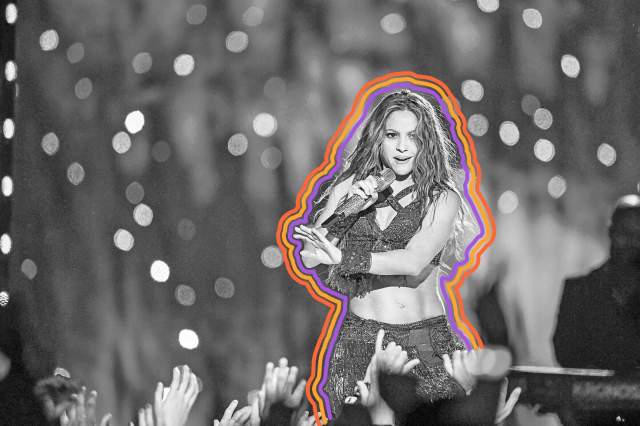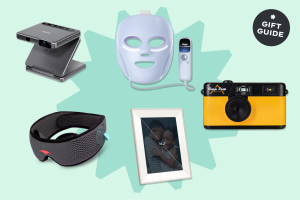
The First Super Bowl Halftime Performers Were Marching Bands
Long before artists such as Bruce Springsteen and Paul McCartney headlined the event, the Super Bowl halftime show was primarily a showcase for college marching bands. At the halfway point of Super Bowl I in 1967 in Los Angeles, the University of Arizona Symphonic Marching Band, the Grambling State University Marching Band, and an Anaheim-area high school drill team took the field to perform for fans. The biggest name to grace the stage that day was trumpeter Al Hirt, who later returned for halftime performances at multiple Super Bowls in the 1970s.
Marching bands continued to dominate the halftime lineup for several years, though records are a little inconsistent for the earliest shows. Most accounts claim that the Grambling State band performed again at Super Bowl II in 1968, but Grambling itself has disputed the claim; according to an archivist from the Pro Football Hall of Fame, performers that year included seven Miami-area high school bands instead. Other early shows featured marching bands from Florida A&M, Southern University, and Southeast Missouri State.
The first celebrity halftime performers debuted in the 1970s, though, again, records are a little spotty. Some accounts have Broadway star Carol Channing singing in 1970, while others say she first took the stage at Super Bowl VI in 1972, alongside jazz legend Ella Fitzgerald. During the “Salute to Louis Armstrong”-themed show, Channing reportedly performed “When the Saints Go Marching In,” and Fitzgerald blew audiences away with her version of “Mack the Knife,” which Armstrong made famous in the 1950s.

An Elvis-Impersonating Magician Headlined the 1989 Halftime Show
Super Bowl XXIII’s halftime show was notable for a few reasons, including the fact that it was the first to incorporate 3D glasses — the distribution of which proved to be a logistical nightmare. It also featured 2,000 choreographed dancers, a fleet of Harley Davidson motorcycles, and fireworks. However, the show was perhaps most famous for being headlined by an Elvis Presley impersonator named Elvis Presto. Presto was portrayed by Alex Cole, a last-minute addition who got the job when the previous actor quit a few days before the game to work on a commercial for Lee Jeans.
Though you’d think the focus of the performance would have been covers of hit Elvis songs, the ’50s-themed musical medley mostly featured tracks by other artists. And the main spectacle was an interactive card trick involving the fans at Miami’s Joe Robbie Stadium, who were tasked with using applause to “pick a card.” The result, however, was extremely lackluster, as improper lighting and less-than-ideal camera angles produced a magic trick that was more confusing than impressive.

New Kids on the Block Were the First Contemporary Pop Headliners
Though the halftime show had previously featured big names such as Ella Fitzgerald and Andy Williams, they often played second fiddle to marching bands and dance teams. It wasn’t until January 27, 1991, that the show began to resemble the star-studded spectacle we know today. On that date, during Super Bowl XXV in Tampa, New Kids on the Block became the first major pop recording act to headline halftime. But despite the pomp and circumstance surrounding their performance, the band’s set didn’t actually air live. Instead, it was preempted by news coverage of the ongoing Gulf War. Viewers had to wait until after the game to see NKOTB perform songs such as “Step by Step” and “It’s a Small World.” (The show was sponsored by Disney and featured Disney characters as well as hundreds of children dressed in traditional clothes from different countries.)
More Interesting Reads

The 1992 Halftime Show Featured a Figure Skating Performance
After featuring a popular musical act in 1991, the halftime show returned to yet another weird and wacky theme in 1992. With the Winter Olympics set to occur the following month, Super Bowl XXVI featured a figure skating performance led by former Olympians Brian Boitano and Dorothy Hamill, who became the only non-football-playing athletes to perform at the Super Bowl. The show also included two 30-foot-tall inflatable snowmen, a forgettable rap song titled “Do the Frosty,” and a musical finale by Gloria Estefan. Even with the latter, though, the event was a considerable flop, and 22 million of the 79 million viewers changed the channel for counterprogramming — including a special episode of the Fox sketch-comedy series In Living Color, which drew much of the audience’s attention away from the game.

Super Bowl Halftime Show Headliners Don’t Get Paid an Appearance Fee
With tens of thousands of people in attendance at the game itself, and millions more watching from home, the Super Bowl halftime show is one of the biggest stages in the world. It doesn’t come with a big paycheck for performers, though. League policy states that while the NFL will cover production costs — some of which can be quite substantial, as Jennifer Lopez and Shakira’s 2020 performance reportedly cost around $13 million to produce — the headliners themselves receive minimal compensation on a “union scale,” which amounts to around a few hundred dollars for the show and slightly more for the rehearsals leading up to it. That’s not to say performers don’t benefit financially, though. In 2018, Justin Timberlake saw his music sales rise 534% on the day of his halftime show, and the year prior, Lady Gaga’s digital sales spiked 1,000%.











